When you are guiding a loved one through the process of getting help for alcohol abuse, it can be easy to feel overwhelmed. You want the best for the person you care about, but there are so many choices. How do you know which facility and which type of program is right and will be most effective? The first step is to understand what the options are. Then you can make an informed and personal decision about seeking care.
Alcohol Treatment Options – How To Choose The Right Alcohol Treatment Program
When it comes to care for alcoholism and alcohol abuse, there is no one-size-fits-all option. Addiction care is personal and most effective when it is individualized to meet the particular needs of each patient.
Your loved one needs the type of care that will work best for him. These are some of the options:
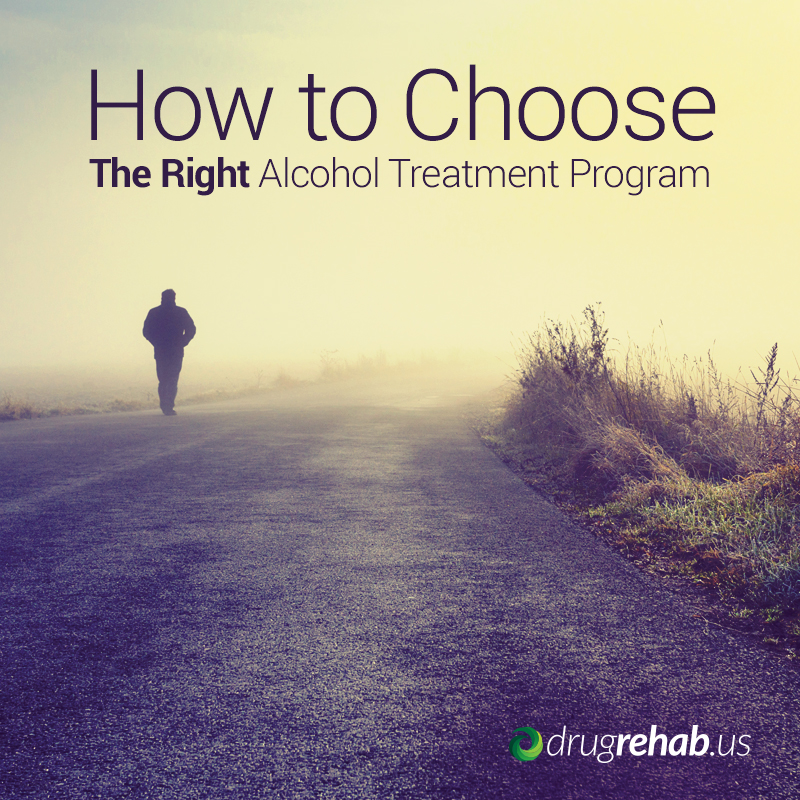 Outpatient counseling – Counseling is useful for anyone who abuses alcohol. On an outpatient basis, it allows the patient to stay at home and to continue going to work or school. This may not be the best option for someone who is a serious alcoholic. Counseling may include group therapy, family therapy or one-on-one counseling.
Outpatient counseling – Counseling is useful for anyone who abuses alcohol. On an outpatient basis, it allows the patient to stay at home and to continue going to work or school. This may not be the best option for someone who is a serious alcoholic. Counseling may include group therapy, family therapy or one-on-one counseling.
- Intensive outpatient program – An intensive program can allow the patient to stay at home, but still receive intense care. This requires a big time commitment, but is good for someone who needs extra support and feels most comfortable staying at home with family.
- Inpatient or residential care – Residential care means staying in a facility for a month or more. This allows the patient to receive intensive, daily care and 24-hour monitoring.
- Sober living – A sober living facility is similar to residential treatment, and may include intensive therapy and treatment. It is often used as a facility for someone who has completed residential care, but is worried about going home. It involves living in a house with other alcoholics in recovery and there are strong social and support components.
- Support group – A support group is a meeting of people trying to cut back on drinking or stay sober after going through treatment. Many are anonymous and follow a 12-step philosophy. These groups can be used as a stand-alone treatment or as ongoing treatment for alcoholics already in recovery.
Making The Right Treatment Choice
Now that you know more about the options for alcohol addiction and abuse treatment programs you can help your loved one make a good decision. Think about his needs and his personality and which type of program would suit him best. If he has a strong support system at home, maybe outpatient care would be best. If he can’t be trusted to not keep drinking, a residential facility might help. If he is not yet an alcoholic, but is engaging in dangerous drinking habits, individual therapy or attendance at a support group may be enough to help him make some important life changes.
As you pick out a facility together, make sure you keep a couple of other factors in mind. Look for a program that has good credentials and a well-trained and experienced staff. You should be able to get positive references from any reputable program. Also look for a facility or therapist that will tailor a program to meet the individual needs of your loved one. A rigid plan used for everyone is not going to be effective. If you keep these things in mind and are careful in your selection process, you should be able to find a treatment program that will help your loved one get sober and learn to stay alcohol-free.
Christian Or Secular Drug Rehab – Which Is Right For You? – Let Us Help You Make This Important Decision
Alcoholic hepatitis is a serious and potentially deadly liver ailment triggered by prolonged, excessive alcohol intake. It constitutes one form of a larger condition called alcohol-related liver disease. In a study published in May/June 2014 in the journal Alcohol and Alcoholism, researchers from two U.S. universities explored the potential usefulness of a medication called baclofen in easing the effects of alcoholic hepatitis in people affected by alcoholism. This medication, originally developed to treat certain types of muscle spasms, has already been shown to help people receiving treatment for alcoholism reduce the intensity of their cravings.
Alcoholic Hepatitis
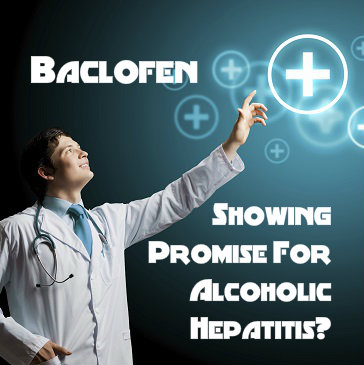 Hepatitis is the generic medical term for any disease mechanism that results in inflammation inside the liver, the body’s primary organ for doing such things as processing toxins and regulating cholesterol levels. Whenever you drink alcohol, a substance essentially poisonous to humans, your liver must process it and break it down so you can avoid any harmful effects.
Hepatitis is the generic medical term for any disease mechanism that results in inflammation inside the liver, the body’s primary organ for doing such things as processing toxins and regulating cholesterol levels. Whenever you drink alcohol, a substance essentially poisonous to humans, your liver must process it and break it down so you can avoid any harmful effects.
Unfortunately, the liver breaks down alcohol relatively slowly and you can easily overwhelm its capacity for detoxification. A person who regularly consumes excessive amounts of alcohol is at risk for one or more progressively damaging changes in his or her liver function.
The first of these changes, called alcoholic fatty liver disease, occurs when the liver starts to produce an abnormally large amount of fat inside its individual cells. Alcoholic hepatitis sets in after alcoholic fatty liver disease and produces symptoms such as jaundice, declining appetite, pain in the abdominal region, nausea and vomiting. The third stage of damaging change, called alcoholic cirrhosis, involves a permanent, disruptive buildup of scar tissue inside the liver.
As many as one-third of all people who habitually consume excessive amounts of alcohol will develop alcoholic hepatitis, the American Liver Foundation reports. The inflammation associated with the condition can have a negative impact on liver function that ranges from mild to severe. People with relatively mild forms of alcoholic hepatitis can recover their liver function if they stop drinking. However, people with relatively severe forms of the condition can experience rapid declines in liver health that lead to a cessation of function (i.e., liver failure). In turn, a person with liver failure can easily die.
Baclofen
Doctors traditionally prescribe baclofen for people experiencing muscle spasms stemming from either certain diseases that damage the spinal cord or the degenerative autoimmune disorder multiple sclerosis. The medication achieves its therapeutic effects in this context by slowing down the spinal cord’s rate of nerve cell interaction. Over the last few years, doctors have started using baclofen as an off-label treatment for the drinking cravings that typically arise during alcoholism recovery. If left unaddressed, these cravings can easily derail an attempt at establishing or maintaining sobriety. In 2012, researchers from France and Italy published the results of a study that confirmed the usefulness of baclofen in reducing the intensity of alcohol cravings.
Baclofen’s Usefulness In Alcoholic Hepatitis Treatment
In the study published in Alcohol and Alcoholism, researchers from Loma Linda University and UCLA used a small-scale investigation of 40 people to test baclofen as a treatment for alcoholic hepatitis. All of the study participants were affected by alcoholism; some of them had both alcoholic hepatitis and alcoholic cirrhosis, while others only had alcoholic hepatitis. Thirty-five of the 40 participants received baclofen at some point during a one-year time period; the average length of use for the medication was just under six months. The researchers gauged the effectiveness of baclofen by comparing the results of seven key tests for alcoholic hepatitis before and after treatment with the medication.
Thirty-four out the 35 baclofen recipients maintained their sobriety throughout the period under consideration. Critically, the researchers concluded that these individuals also experienced a significant reduction in the severity of their alcoholic hepatitis as measured through six out of the seven screening tests. In addition, they concluded that use of baclofen did not produce any substantial side effects.
The study’s authors believe their findings underscore both the usefulness and the safety of baclofen as a treatment for alcoholic hepatitis. However, the size of the study was quite small. As a result, the authors urge further work in this area in order to confirm their results and determine the specific doses of the medication that have the maximum benefits for people with alcoholism-related liver inflammation.
Find Out If Baclofen Can Help Treat Cocaine Addiction
22 Jul 2014
Why Do Heavy Drinkers Have A Lower Adherence To Naltrexone/Cognitive Behavioral Therapy?
Treatment programs for people affected by alcoholism commonly feature medications, some form of counseling or psychotherapy, or a combination of medication and counseling or psychotherapy. Together, a medication called naltrexone and a form of therapy called cognitive behavioral therapy have been shown to produce beneficial results in controlled testing. In a study published in March 2014 in The American Journal of Drug and Alcohol Abuse, researchers from two Finnish institutions sought to determine if the naltrexone/cognitive behavioral therapy combination works as well in a less controlled setting that mimics a typical treatment environment.
What Is Naltrexone And How Does It Work?
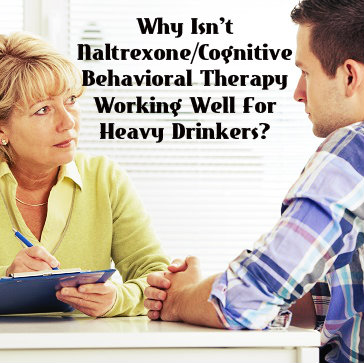 Naltrexone is a medication that blocks access to sites, called opioid receptors, located on nerves in both the brain and certain parts of the body. When used in a person addicted to opioid substances of abuse, this blocking action prevents the characteristic “high” associated with narcotics. For reasons that researchers and doctors don’t fully understand, the same blocking action helps reduce the amount of pleasure derived from alcohol consumption, in addition to decreasing the intensity of any urges to drink more alcohol.
Naltrexone is a medication that blocks access to sites, called opioid receptors, located on nerves in both the brain and certain parts of the body. When used in a person addicted to opioid substances of abuse, this blocking action prevents the characteristic “high” associated with narcotics. For reasons that researchers and doctors don’t fully understand, the same blocking action helps reduce the amount of pleasure derived from alcohol consumption, in addition to decreasing the intensity of any urges to drink more alcohol.
Together, these effects can help a person in recovery from alcoholism avoid relapsing back into a pattern of active drinking. As a rule, doctors give the medication only to recovering alcoholics who have entirely or largely halted their alcohol intake; doctors also typically use naltrexone as part of an overall treatment approach rather than as a sole component in treatment. The medication comes in forms that include tablets and an extended-release injection.
Cognitive Behavioral Therapy
Cognitive behavioral therapy is the umbrella term for a group of therapeutic approaches that focus on helping patients/clients identify and change thoughts and beliefs that can contribute to a range of harmful behaviors, including the abuse of alcohol and/or drugs.
Specific approaches that fall under this umbrella include rational behavior therapy, dialectic behavior therapy and rational emotive behavior therapy. Cognitive behavioral therapy takes place in a limited timespan that usually lasts for about four months. Unlike some forms of psychotherapy that maintain a strict hierarchy between the therapist and patient/client, it features a shared process that calls on the patient/client to take an active role in achieving his or her treatment objectives. The objectives for any given individual are specific to his or her particular situation and self-perceived needs and wants.
Does The Combination Of Naltrexone And Cognitive Behavioral Therapy Work For Alcoholism?
In the study published in The American Journal of Drug and Alcohol Abuse, researchers from Finland’s University of Helsinki and National Institute for Health and Welfare assessed the usefulness of the naltrexone/cognitive behavioral therapy combination as a treatment for alcoholism in a real-world environment. They chose this line of inquiry, in part, because of the relative lack of information on the combination in people actively receiving treatment outside of a controlled, experimental setting. During the study, the researchers gathered data from 315 outpatients receiving both naltrexone and cognitive behavioral therapy for a 20-week period. Measurements of treatment success included relative levels of alcohol intake and relative levels of alcohol craving among the participants.
After completing their analysis of the treatment outcomes, the researchers concluded that the naltrexone/cognitive behavioral therapy combination does not work equally well for all people recovering from alcoholism. Those individuals most likely to benefit from naltrexone and cognitive behavioral therapy were people who consumed relatively small amounts of alcohol before entering treatment. Conversely, the individuals least likely to benefit from the combination drank relatively heavily before entering recovery, had never been in a recovery program before and had a fixed pattern of alcohol consumption before entering treatment.
When Naltrexone And Cognitive Behavioral Therapy Works Best
The authors of the study published in The American Journal of Drug and Alcohol Abuse note that, strictly speaking, the combination of naltrexone and cognitive behavioral therapy did not fail to produce good results.
Instead, those individuals who fared poorly often did not take their prescribed doses of the medication, especially when they continued to engage in significant amounts of drinking while taking part in treatment. The authors believe that the fairly low rate of compliance with naltrexone use may pose a serious concern for the real-world treatment of alcoholism, especially among severely affected alcoholics.
Consequently, they also believe that alcohol programs may need to use a more comprehensive set of treatment options in order to help heavily affected alcoholics improve while in recovery. On a related note, doctors can use the extended-release, injectable form of naltrexone (Vivitrol) to overcome some of the problems with medication compliance.
Read Our Other Alcoholism Treatment Posts
Addiction researchers know that alcohol produces some of its effects inside the brain by activating sites called opioid receptors, found on the surfaces of nerve cells. However, they don’t completely understand the brain’s opioid receptor system, and therefore don’t entirely know how activation or deactivation of this system can help or harm a person who drinks excessive amounts of alcohol.
In a study published in May 2014 in the journal Biological Psychiatry, a team of U.S. and Danish researchers explored the alcoholism-related role of one specific part of the brain’s opioid receptor system. The researchers concluded that successful manipulation of this segment of the system could lead to the development of a new family of alcoholism medications.
Alcoholism Symptoms
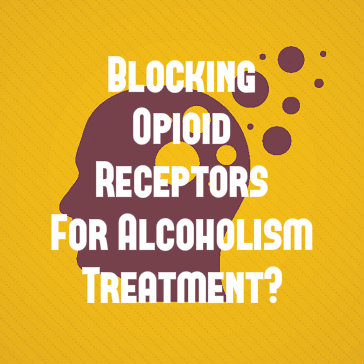 Alcoholism is partially defined by a physical dependence, a switch in long-term brain function characterized by a need to regularly consume alcohol in order to feel “normal.” In addition, people with the condition experience symptoms stemming largely from dependence, including recurring urges to keep drinking, an impaired or absent ability to limit drinking participation, increasing tolerance to the impact of any given amount of alcohol intake and the onset of a withdrawal syndrome if the brain’s requirements for alcohol go unmet.
Alcoholism is partially defined by a physical dependence, a switch in long-term brain function characterized by a need to regularly consume alcohol in order to feel “normal.” In addition, people with the condition experience symptoms stemming largely from dependence, including recurring urges to keep drinking, an impaired or absent ability to limit drinking participation, increasing tolerance to the impact of any given amount of alcohol intake and the onset of a withdrawal syndrome if the brain’s requirements for alcohol go unmet.
Alcohol Use Disorder
In any person, the symptoms of physically dependent alcoholism can overlap with the symptoms of non-dependent alcohol abuse. For this reason, current standards in the U.S. ask doctors to diagnose both alcoholism and alcohol abuse as components of a condition called alcohol use disorder.
Alcohol and Opioid Receptors
Opioid receptors get their name because they act as the pathways that allow opioid drugs and medications in the bloodstream to gain access to the brain and spinal cord (central nervous system). There are several types of these receptors on nerve cell surfaces in the brain. For reasons not fully understood by experts in the field, opioid receptors also play a role in giving alcohol access to the brain.
Pharmaceutical researchers have begun to exploit this fact by developing alcoholism medications designed to produce their treatment benefits by occupying the brain’s opioid receptors and thereby blocking alcohol from triggering some of its characteristic effects. One specific medication currently approved in the U.S. for use in alcoholism treatment, called naltrexone (ReVia, Vivitrol), blocks a particular type of opioid receptor and reduces alcohol cravings by diminishing the amount of pleasure derived from alcohol intake.
New Alcoholism Treatments?
In the study published in Biological Psychiatry, researchers from Washington State University and Denmark’s Neuroscience Drug Discovery used laboratory experiments on rats to investigate the role of one specific type of opioid receptor, called the K opioid receptor, in promoting the onset and continuation of alcoholism.
They chose to explore this topic, in part, in response to accumulating evidence that the K opioid receptor helps determine how people react to excessive alcohol intake. In particular, when a person drinks too much alcohol, activation of this receptor may lead to unpleasant emotional states and loss of the ability to feel pleasure. Counterintuitively, this situation may in turn trigger additional drinking as part of a conscious or unconscious attempt to offset the negative feelings associated with alcohol consumption.
During the study, the researchers supplied large amounts of alcohol to a group of rats for an extended period of time, and then allowed those rats to go through alcohol withdrawal. After examining the rats’ brains, they concluded that long-term, excessive alcohol consumption seriously disrupts function in a part of the brain responsible for helping to maintain critical functions, such as the ability to process emotions and make decisions.
While the rats were going through withdrawal, the researchers gave them a number of drugs designed to manipulate their brains’ K opioid receptors. After analyzing the impact of these drugs, they concluded that problems with the K opioid receptors play a significant role in producing the heavy alcohol consumption that people with alcoholism commonly rely on to cancel out alcohol withdrawal symptoms.
The study’s authors believe their findings may be critically important for the development of future medical treatments for alcoholism that produce their benefits by blocking access to the brain’s K opioid receptors. Specifically, they believe that such treatments could help achieve such goals as diminishing the emotional impact of alcohol withdrawal, helping people in recovery establish a stable state of abstinence and helping people in recovery otherwise meet the objectives of their treatment programs.
Learn About Topiramate Treatment For Alcoholism
Medication commonly plays an important role in the effective treatment of alcoholism (one of the two overlapping conditions that constitute alcohol use disorder). Some of the medication options in use were specifically designed to help people affected by problematic alcohol use, while others were originally designed for the treatment of non-alcohol-related health concerns.
In a study published in April 2014 in The American Journal of Drug and Alcohol Abuse, researchers from the Boston University School of Medicine explored the potential usefulness of an anti-seizure medication called ezogabine or retigabine as a treatment for people diagnosed with alcoholism.
Medications For Alcoholism Treatment
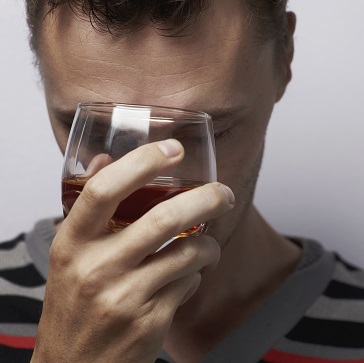 Doctors have four main medication options for helping people affected by alcoholism. Two of these options, disulfiram (Antabuse) and acamprosate (Campral), were developed primarily for alcohol-related treatment. Pharmaceutical researchers initially developed the third option, naltrexone (ReVia, Vivitrol), as a treatment for people diagnosed with opioid addiction. The fourth option, topiramate (Topamax), was originally intended to help individuals affected by certain types of seizure disorders.
Doctors have four main medication options for helping people affected by alcoholism. Two of these options, disulfiram (Antabuse) and acamprosate (Campral), were developed primarily for alcohol-related treatment. Pharmaceutical researchers initially developed the third option, naltrexone (ReVia, Vivitrol), as a treatment for people diagnosed with opioid addiction. The fourth option, topiramate (Topamax), was originally intended to help individuals affected by certain types of seizure disorders.
The U.S. Food and Drug Administration has officially approved disulfiram, acamprosate and naltrexone as alcoholism treatments. The FDA has not approved topiramate for alcoholism treatment; however, doctors can still prescribe this medication as an unofficial or “off-label” option.
Unique Results
Each of the current medication options for alcoholism produces results in its own distinct way. For example, disulfiram deters drinking by slowing down the body’s ability to process alcohol and sharply exaggerating the unpleasant symptoms associated with excessive alcohol consumption. Acamprosate helps ease some of the worst symptoms of alcohol withdrawal by making certain changes in the brain’s chemical balance.
Naltrexone helps block the nerve receptors that normally give opioid narcotic substances access to the brain; for reasons that are not entirely clear, this action also interferes with the pleasure derived from alcohol consumption and reduces the strength of cravings for more alcohol intake. Topiramate helps reduce any overactivity in the brain’s nerve cells; although no one really knows why, this reduction also diminishes the strength of alcohol cravings and helps lower the risks for participation in excessive drinking.
Outside of the U.S., ezogabine is also commonly known as retigabine. Its brand name within the U.S. is Protiga. Like topiramate, ezogabine belongs to a group of medications called anti-seizure medications or anticonvulsants. Doctors typically use the medication as part of a larger course of treatment for adults affected by seizures called partial onset seizures, which remain localized in one part of the brain rather than branching out and producing more widespread effects. Ezogabine comes in tablet form.
Ezogabine In Alcoholism Treatment
In the study published in The American Journal of Drug and Alcohol Abuse, the researchers from the Boston University School of Medicine used laboratory experiments on rats to investigate the usefulness of ezogabine (retigabine) as a treatment for alcoholism. These researchers had previously explored the potential usefulness of other types of anti-seizure medications and chose to focus on ezogabine because the medication works in a fairly unique way inside the brain.
During the study, the researchers gave ezogabine to two groups of rats for three days. One of these groups had access to a 10 percent solution of pure drinking alcohol, while the other group had access to a 5 percent alcohol solution. A comparison group of rats received a placebo instead of ezogabine. After comparing the outcomes in the three groups, the researchers concluded that the rats given ezogabine significantly reduced their alcohol intake over the course of the study.
The authors note that the therapeutic dose of ezogabine given to the rats in the project was quite close to the dose capable of producing an unwanted loss of muscle control. This means that, in human beings, the amount of the medication needed to help recovering alcoholics curb their drinking may not differ much from the amount capable of causing harm. Citing this finding, the study’s authors call for more research to investigate the specific effects that ezogabine has inside the central nervous system (brain and spinal cord). In addition, they feel that their ezogabine-related work can play an important role in the search for other medications that work in a similar way and may ultimately provide unique benefits in alcoholism treatment.
Call Us Now For Alcohol Abuse Help! We Are Here For You 24/7!
Baclofen is the name of a medication originally developed to treat people affected by severe muscle spasms. Increasingly, doctors also use this medication as an off-label treatment for alcohol cravings in people going through treatment for alcoholism. In a study published in February 2014 in the journal Alcoholism: Clinical & Experimental Research, a team of French researchers assessed the dose of baclofen required to provide effective treatment for alcoholics. These researchers concluded that the effective dose of the medication can vary widely for no clear underlying reason.
How Baclofen Works And What It’s Used For
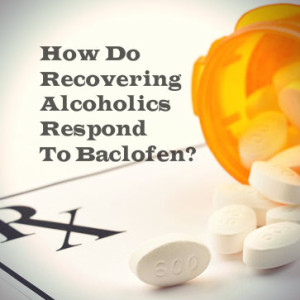 Baclofen produces a muscle-relaxing effect by altering the rate of nerve cell communication inside the spinal cord, which forms part of the central nervous system. This effect does not cure the underlying causes of severe muscle spasms; however, it does reduce the intensity of those spasms and forms part of a larger overall treatment regimen.
Baclofen produces a muscle-relaxing effect by altering the rate of nerve cell communication inside the spinal cord, which forms part of the central nervous system. This effect does not cure the underlying causes of severe muscle spasms; however, it does reduce the intensity of those spasms and forms part of a larger overall treatment regimen.
The most well-known condition treated with baclofen is multiple sclerosis, which damages the protective coatings of the spinal nerves and nerves inside the brain. Some people also receive the medication for certain forms of spinal disease or in the aftermath of traumatic injuries that have an impact on spinal cord function. Baclofen is available in tablet form in the U.S. under the brand names Kemstro and Lioresal.
Baclofen’s Use In Alcoholism Treatment
Once a medication receives FDA approval for treatment of one condition, doctors sometimes adopt that medication as a treatment for other conditions. This type of use is commonly known as off-label use. In the early 2000s, doctors began using baclofen as an off-label treatment for alcoholism (a condition which forms part of a larger health diagnosis called alcohol use disorder). The medication achieves its positive effects in this role by helping to ease constant or recurring cravings for alcohol intake.
As a rule, these cravings play a critical role in establishing and reinforcing alcohol dependence, which is the underlying alteration in brain chemistry responsible for the onset of alcoholism. In a study published in 2012 in the journal Frontiers in Psychiatry, a team of French and Italian researchers investigated the effectiveness of baclofen in reducing alcohol cravings. These researchers found that the medication is highly effective in this role, and therefore can make significant contributions toward breaking the cycle of alcohol use in people going through the alcoholism recovery process.
Varying Dosages Of Baclofen
Effective doses of baclofen can vary widely between individuals going through alcoholism treatment. The low end of the typical dosage range is 30 mg per day; people at the high end of the range can require as much as 240 mg per day. In the study published in Alcoholism: Clinical & Experimental Research, researchers from two French institutions tried to find out which factors help determine whether a given person will need a low daily dose of baclofen or a high daily dose. They conducted their work with information gathered from 37 adults (ranging in age from 31 to 68) going through alcoholism treatment. Specific factors looked at as potential influences on the required dose of baclofen included level of involvement in smoking, blood levels of 10 naturally occurring substances that can indicate changes in normal body function and basic demographic attributes such as gender, height, age and weight.
After completing their work, the researchers concluded that the differences in the daily required doses of baclofen stem from the widely varying rates at which the human body can absorb and distribute the medication. Simply put, some people experience relatively rapid absorption and distribution, while others experience relatively slow absorption and distribution. Critically, after examining all of the potential factors that could influence the body’s use of baclofen, the researchers could not find anything that would explain the different rates of use that appear in people going through alcoholism treatment.
Unique Differences In Absorption Of Baclofen And High Dose Side Effects
The authors of the study published in Alcoholism: Clinical & Experimental Research believe that individual differences in the absorption and distribution of baclofen may help explain why some people either require large doses of the medication to receive a benefit or don’t benefit from the medication at any reasonable dosage. This is extremely important information, since the use of high doses of baclofen can potentially produce severe forms of side effects such as lightheadedness, sleepiness, muscle weakness, mental disorientation, convulsions or disrupted breathing. Further research will be needed to determine exactly what accounts for the wide variations in baclofen’s relative effectiveness.
Read More About How Alcoholics Refuse To Get Treatment Due To Stigma
19 Jul 2013
Without Screening Alcohol Abuse May be Missed
Patients come into a doctor’s office and give their symptoms to the doctor. The doctor listens, nods his head, and starts to piece together the symptoms the patient is mentioning and what he thinks may be the cause of those symptoms. But sometimes the patient doesn’t share everything with the doctor and the doctor does not ask some questions that could determine the causes or aggravations of an illness.
A new study from the School of Medicine at The University of Texas Health Science Center in San Antonio reveals that some questions doctors may not be asking are related to alcohol consumption. The article, in the Annals of Family Medicine, states that doctors may miss alcoholic symptoms in three out of four patients who come into their office.
 Screening Can Provide Proper Treatment
Screening Can Provide Proper Treatment
Researchers at UT Medicine conducted a study to see how well physicians could identify patients that exhibited symptoms of alcohol abuse. Over 1,600 participants were gathered from 40 primary care practices across multiple central states.
After participants were asked questions about their drinking habits, doctors were asked to make a diagnosis of whether or not the person was at risk for alcohol abuse. Participants were asked about the frequency that they drank alcohol and whether or not their drinking caused them to be reckless to themselves or with others. Doctors then categorized them in different alcohol use groups, including non-harmful drinker or harmful drinker.
Study co-author, Dr. Barbara Turner, stated that a doctor’s hunch missed identifying three out of four participants at risk for alcohol abuse. When doctors did suspect a person might be abusing alcohol though, the doctor was usually right.
Excessive Alcohol Consumption Hurts in Many Ways
Study authors believe that if patients were screened for their drinking habits that doctors may be able to help treat much more than alcoholism. High blood pressure, diabetes, liver disease, and some cancers have been connected to excessive drinking of alcohol. The 2011 National Health Interview Survey stated that over 85,000 people die each year from a circumstance where alcohol was misused.
Earlier studies reveal that when doctors have been able to identify harmful alcohol consumption habits in their patients, their patients decreased their alcohol consumption and improved their lives. Doctors provided brief counseling sessions to help their patients succeed in alcohol reduction.
Changing Procedures
Doctors can only treat what they see that needs to be treated. A screening procedure to help them identify a patient’s possible problems with alcohol use may help them better fully treat their patient.
Dr. Turner suggests that doctors screen their patients regularly to identify any changes in their drinking habits. A person may start drinking more heavily after both good and bad times like the following:
- Divorce
- Death of a loved one
- Loss of a job
- A new job or promotion to be social with new colleagues
- Celebrating with friends
If doctors catch harmful drinking patterns early, they may help prevent risky actions and future health problems in their patients.
03 Jun 2013
Is the Entertainment Industry to Blame for Drug and Alcohol Problems of Former Child Stars?
If you are like me, you have probably wondered why so many former child television, movie, and music stars have ended up addicted to drugs and alcohol, and just in general are living lives marked by excessive levels of melodrama and notoriety.
From Judy Garland in Hollywood’s Golden Age to contemporary figures such as Michael Jackson, Macaulay Culkin, Britney Spears, and Lindsay Lohan, there are innumerable case histories of individuals who found success on the stage, screen, and in the recording studio at tender ages only to be plagued by bouts with substance abuse and mental and emotional breakdown as they advanced into adulthood. Given how frequent and awful the stories of tragedy have been, it would be difficult not to draw the conclusion that there is something inherently traumatic about great success in the entertainment industry that causes talented young people who make it to the big time to eventually lose their way.
This is indeed an easy conclusion to draw, but that does not make it the correct one. There is no question that what young people who reach stardom at early ages experience is something far removed from normal or routine, and it may very well be that so much public scrutiny and attention so early in life does have an impact on impressionable minds that is not altogether positive. But for the sake of balance and perspective, it must be acknowledged that there have been scores of people who found success in the entertainment business who grow up to be happy, normal, successful and extremely well-adjusted people.
 So for example, while Judy Garland’s experiences with substance abuse have received much attention over the decades, we would be remiss if we did not note that the life of her contemporary, (and the most famous child star the world has ever seen), Shirley Temple, went in an entirely different direction. Temple eventually left the motion picture business and entered the world of international politics, where she helped blaze trails for women everywhere by securing appointments as a U.N. representative and the U.S. ambassador to Ghana and Czechoslovakia. And what is one to make of the career of Ron Howard, who began working steadily as an actor at the age of 6 and went on to become one of the most successful directors in the business and by all accounts a completely sober and level-headed guy? And what about all the formerly young stars who rose to prominence right alongside the notorious guys and gals we have all grown to know so well (Lindsay, Britney, Charlie Sheen, etc.) whose names have never once appeared in the tabloid press because they were busted for a DUI or forced to enter a rehab center?
So for example, while Judy Garland’s experiences with substance abuse have received much attention over the decades, we would be remiss if we did not note that the life of her contemporary, (and the most famous child star the world has ever seen), Shirley Temple, went in an entirely different direction. Temple eventually left the motion picture business and entered the world of international politics, where she helped blaze trails for women everywhere by securing appointments as a U.N. representative and the U.S. ambassador to Ghana and Czechoslovakia. And what is one to make of the career of Ron Howard, who began working steadily as an actor at the age of 6 and went on to become one of the most successful directors in the business and by all accounts a completely sober and level-headed guy? And what about all the formerly young stars who rose to prominence right alongside the notorious guys and gals we have all grown to know so well (Lindsay, Britney, Charlie Sheen, etc.) whose names have never once appeared in the tabloid press because they were busted for a DUI or forced to enter a rehab center?
There are countless examples of former child television, movie, or music stars who have gone on to lead admirable and entirely sane lives. And even among those who have run into trouble, there are many like Drew Barrymore who have been able to bounce back and apparently recover from their substance abuse issues. If we were to take a comprehensive survey, we would most likely discover that these stories of normalcy and triumph outnumber the scandalous tales and stunted life histories of Hollywood’s irredeemable bad boys and girls by a significant margin, but of course people aren’t really interested in hearing about all of the child stars who didn’t end up dead, addicted, or on the skids as adults.
This is not to suggest that there is no problem here. Insiders agree that the drug culture is alive and well in both Hollywood and the music industry and that levels of drug abuse and alcohol consumption are higher among celebrities than among the general public. But just because a certain type of temptation exists does not mean that all who are exposed to it will succumb even if they have been involved with those cultures from an early age, and the fact that so many don’t would tend to suggest that when grown child stars end up addicted and corrupted, there is a lot more going on than meets the eye.
When Parents Don’t Parent, Kids Don’t Grow Up
Rather than blaming the entertainment industry, we need to take a much closer look at the parents of these lost souls, who chose to expose their kids to the public eye during a potentially fragile stage of their lives. Many of the stars who have had the most trouble were actually pushed into the industry by moms and dads who were in it for the money or who wanted to bask in the glory of having famous sons or daughters. Judy Garland, Lindsay Lohan, Gary Coleman, Tatum O’Neal and Michael Jackson are just a few examples of troubled former child stars whose parents seem to have been more interested in fame and fortune than they were in the welfare of their children. In fact, it is quite rare to find former child stars who became addicted to drugs or alcohol later in life who would testify that they came from safe, secure and loving homes. On the other hand, young entertainers who grew up in stable homes with parents who always watched out for their interests and never pushed them to do anything they weren’t ready for are the ones who, for the most part, have seemed to do just fine after reaching maturity.
And that is the key word – maturity. So many of the child stars who have struggled as adults (Michael Jackson is the most obvious example here) never really grew up. Because their lives were so abnormal and distorted, they were never able to make the transition from adolescence to adulthood, and this “failure to launch,” to use a colloquial term, is what left them vulnerable to the dangerous temptations that the entertainment culture offers so readily. Immaturity and insecurity go hand-in-hand, which explains why Hollywood and the music industry attract so many people who lust after fame and fortune because they believe that getting people to pay attention to them and notice them is the one and only thing that can fill up the empty spaces in their souls. And what makes the situation so difficult for many former child stars is that they were taught to think and feel this way from an early age by parents who were projecting their own immaturity onto their helpless offspring.
Lights, Camera, Destruction!
 Behind the glitz, glamour, and money, Hollywood and the music industry share a dark side, and intensive involvement in this world may not be good for the minds, bodies, and spirits of vulnerable people who are in no position emotionally or psychologically to avoid all the potential pitfalls. The former child stars whose moms and dads pushed them toward the bright lights instead of allowing them to find their own passions undoubtedly carry many scars, and the bouts with substance abuse that so many have experienced is a direct reflection of this parental neglect and abandonment (lets call it what it is, kids forced to live out their parents’ dreams were most assuredly neglected and abandoned).
Behind the glitz, glamour, and money, Hollywood and the music industry share a dark side, and intensive involvement in this world may not be good for the minds, bodies, and spirits of vulnerable people who are in no position emotionally or psychologically to avoid all the potential pitfalls. The former child stars whose moms and dads pushed them toward the bright lights instead of allowing them to find their own passions undoubtedly carry many scars, and the bouts with substance abuse that so many have experienced is a direct reflection of this parental neglect and abandonment (lets call it what it is, kids forced to live out their parents’ dreams were most assuredly neglected and abandoned).
Celebrity itself is not to blame for the problem behavior of famous people, but the fact that so many seek fame with such hunger and desperation, as if it were the only thing that mattered, is a sign of deep-seated psychological and emotional immaturity. Child stars all too often are the victims of such misguided ambitions, rooted in the subconscious of their caregivers, and this is why it is hardly surprising that so many eventually fall into the greedy, grasping clutches of drugs and alcohol. Fame and fortune cannot replace parental love and support, and those who attain the former without the latter are almost inevitably headed for disaster—and the cameras will be right there to capture every moment of the action once it finally arrives.
More Hollywood News about Addiction: Colin Farrell: On Overcoming Addiction To Booze And Drugs


